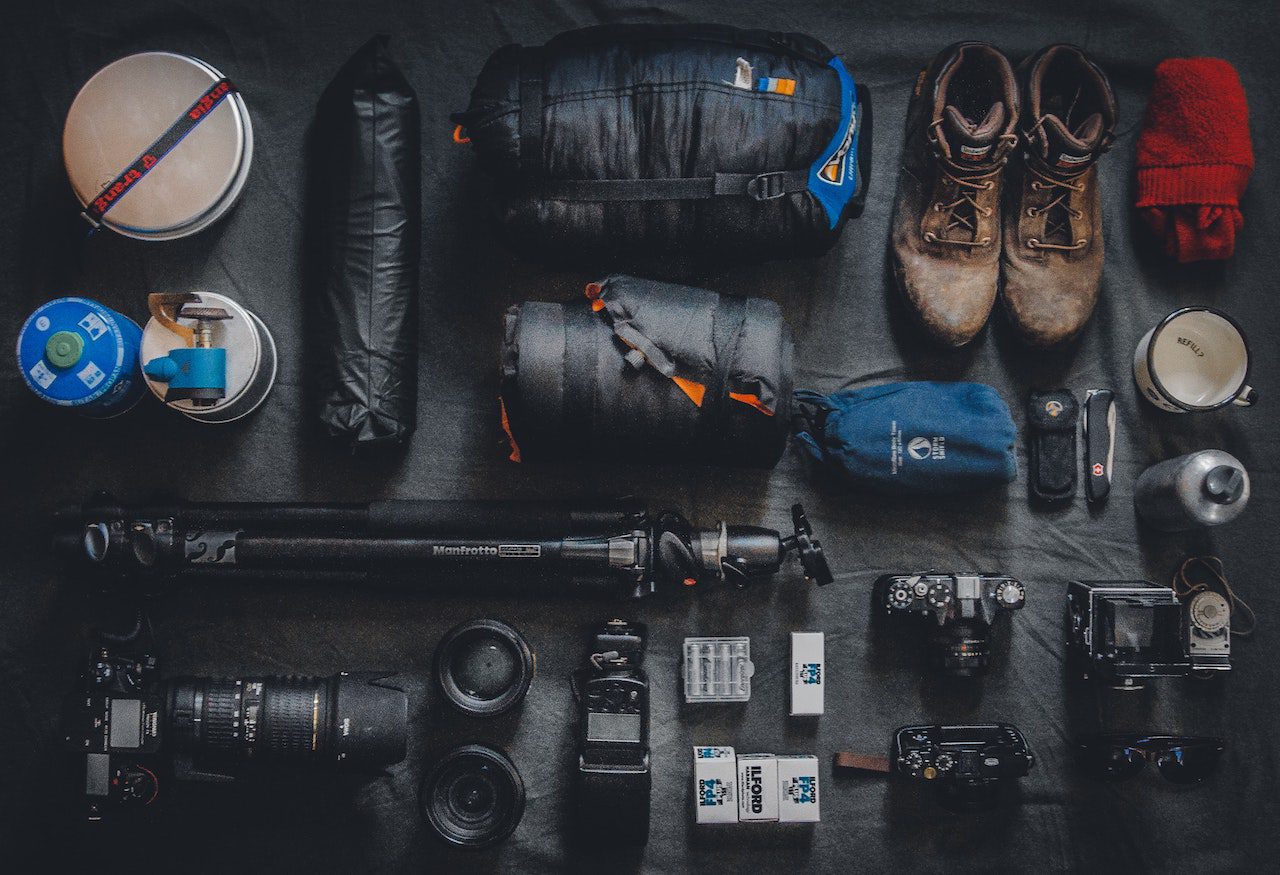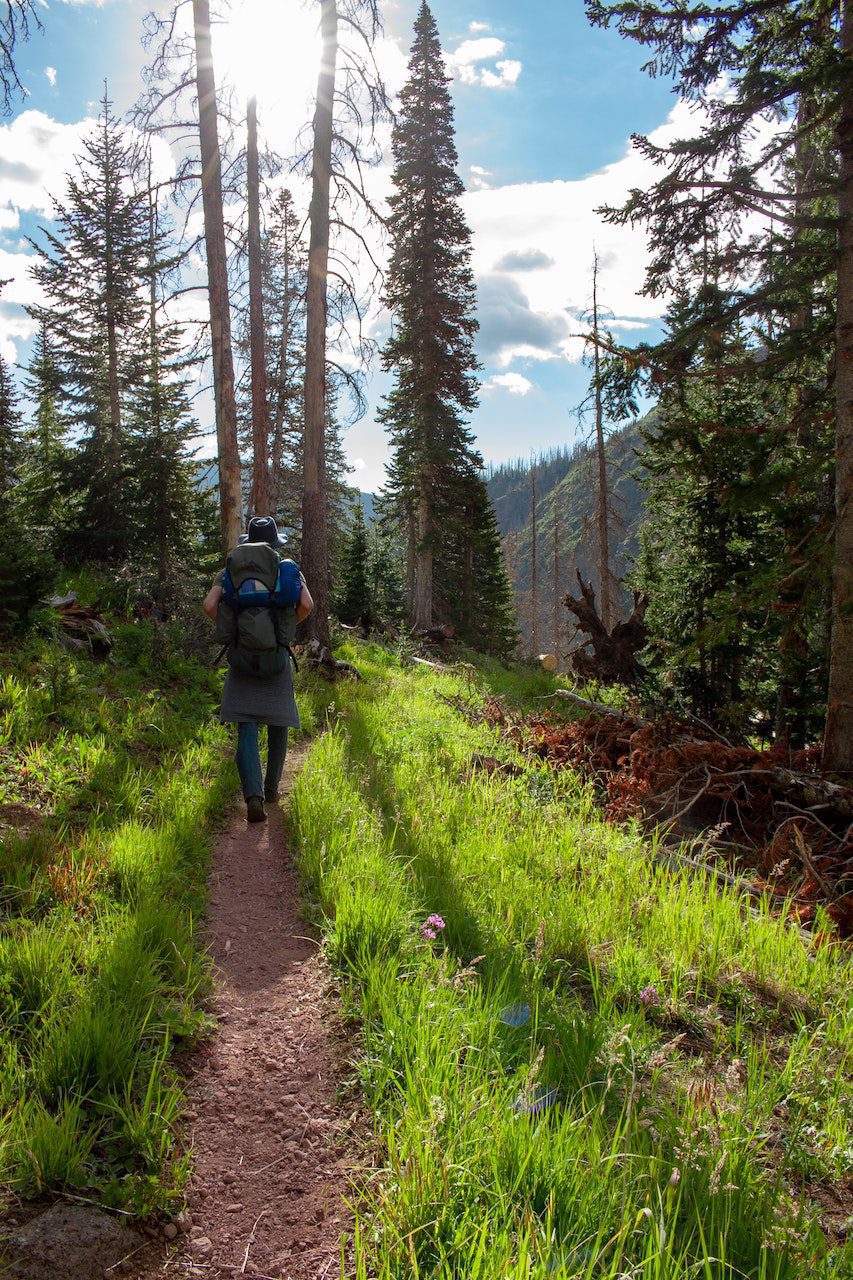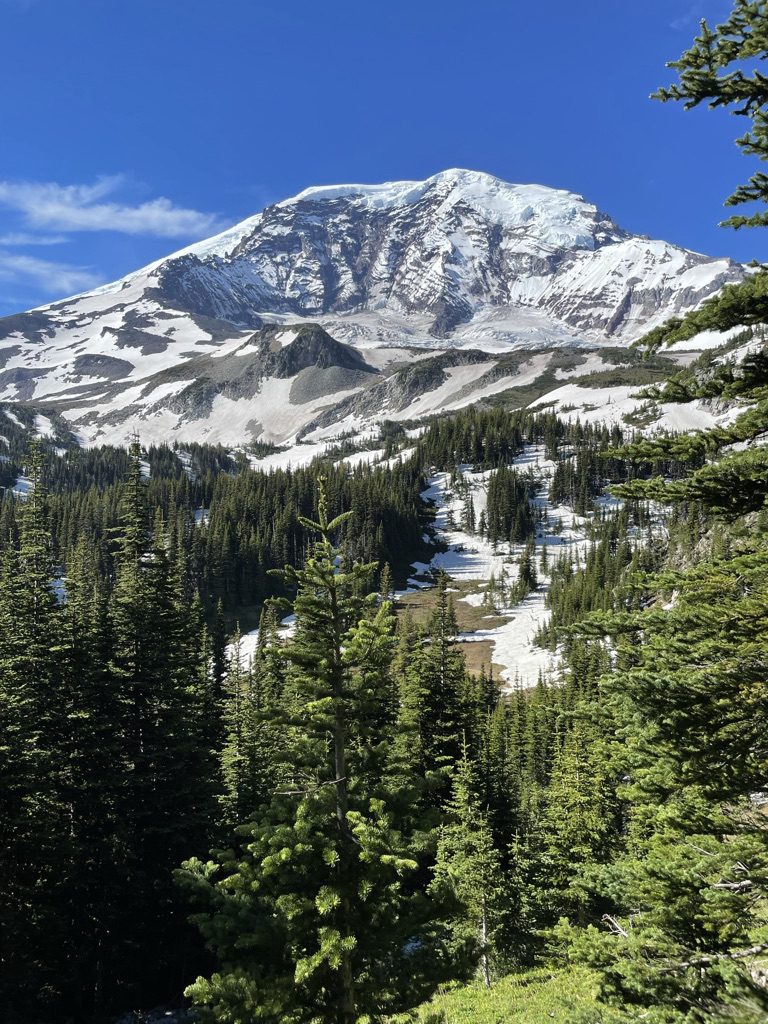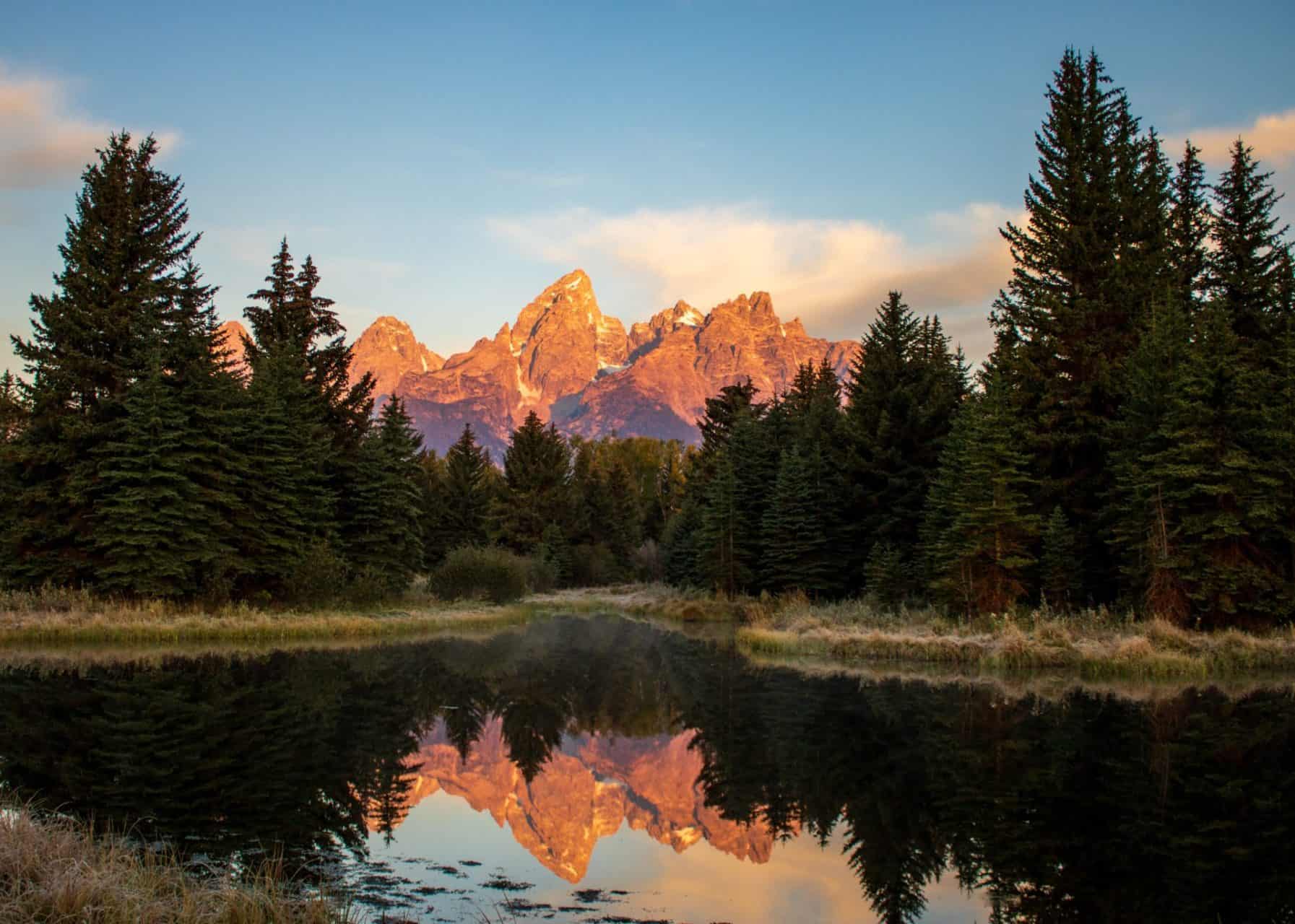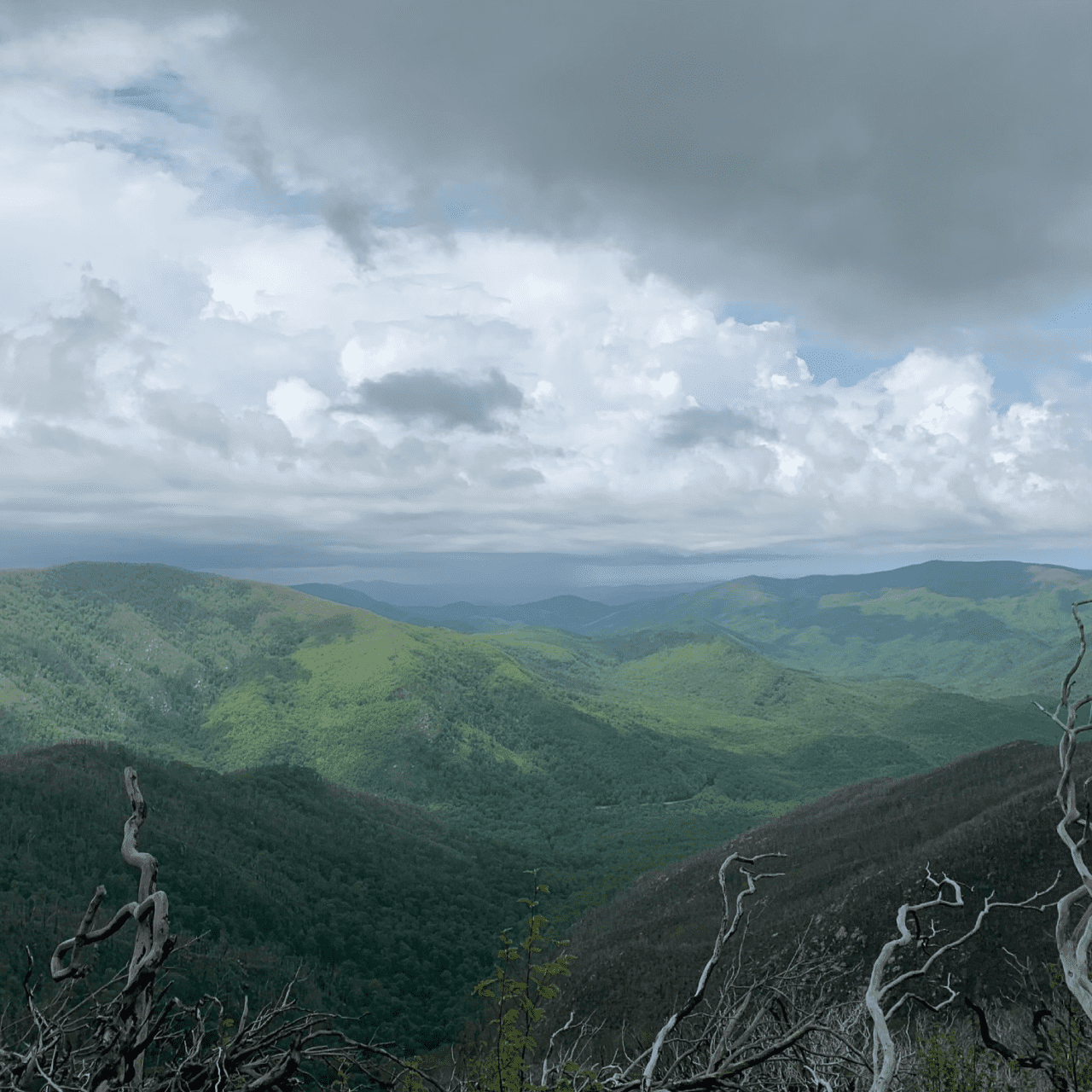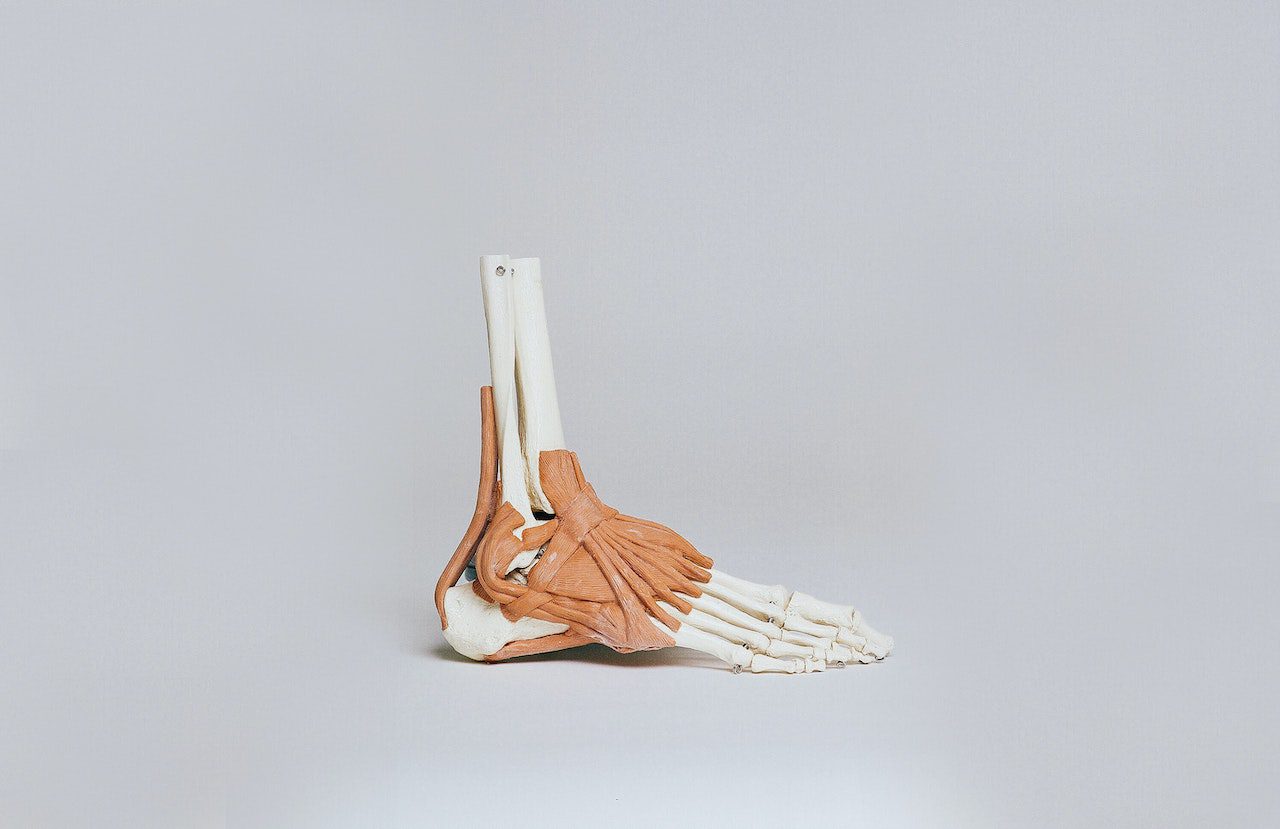
How To Store Food While Backpacking:
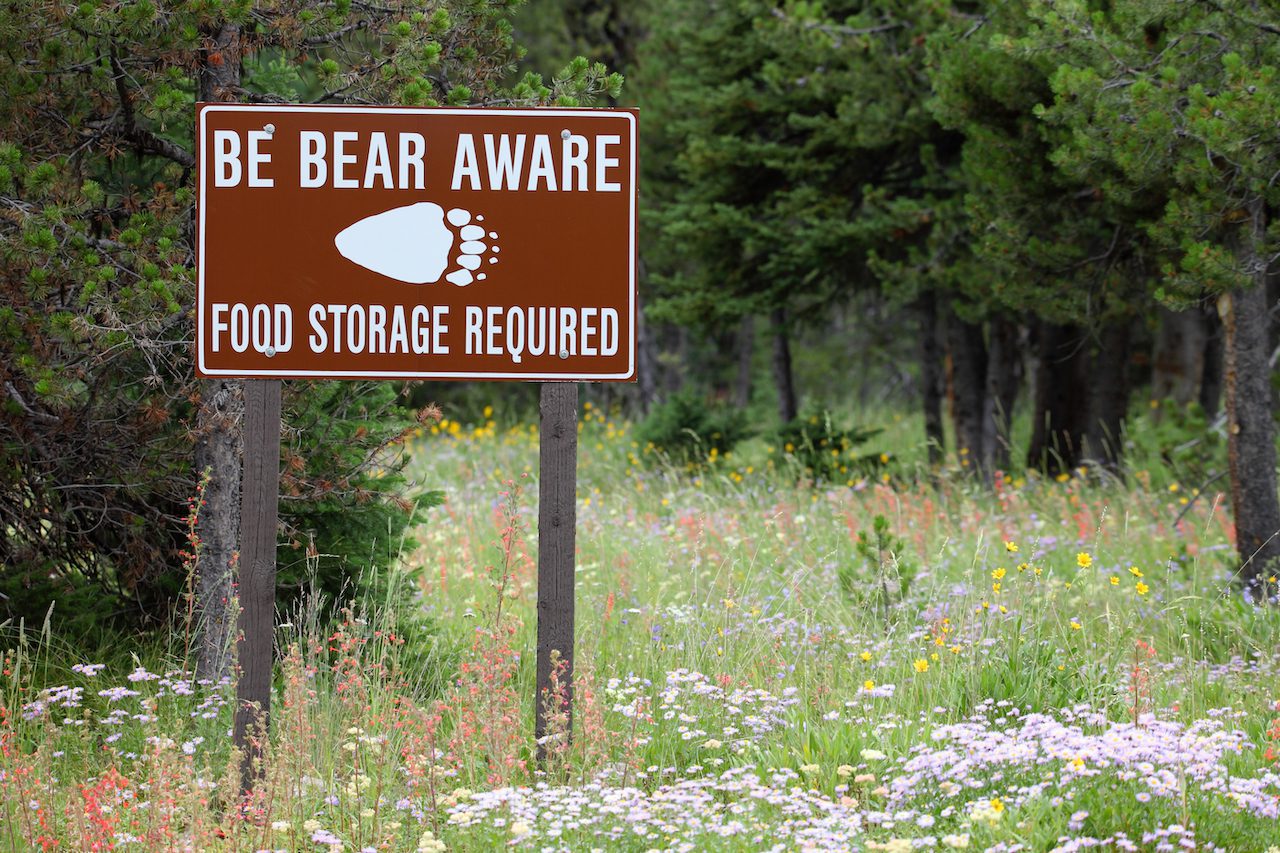
Like many backpacking skills storing your food is something that seems so basic, but it is crucial to develop this skill and perform it correctly. Failure to do so can leave you hungry and be harmful to local wildlife. Here is the skinny on how to store food while backpacking:
- Learn the food storage rules of the park you plan to visit.
- Transfer food from original containers to zip lock bags.
- Divide your food into days.
- Layer your meals in your dry bag or bear canister by the day.
- Put all food, trash, and odorous items in your bear hang or bear canister at night.
- Pack out your trash.
Why Is It Important to Properly Store Your Food While Backpacking:
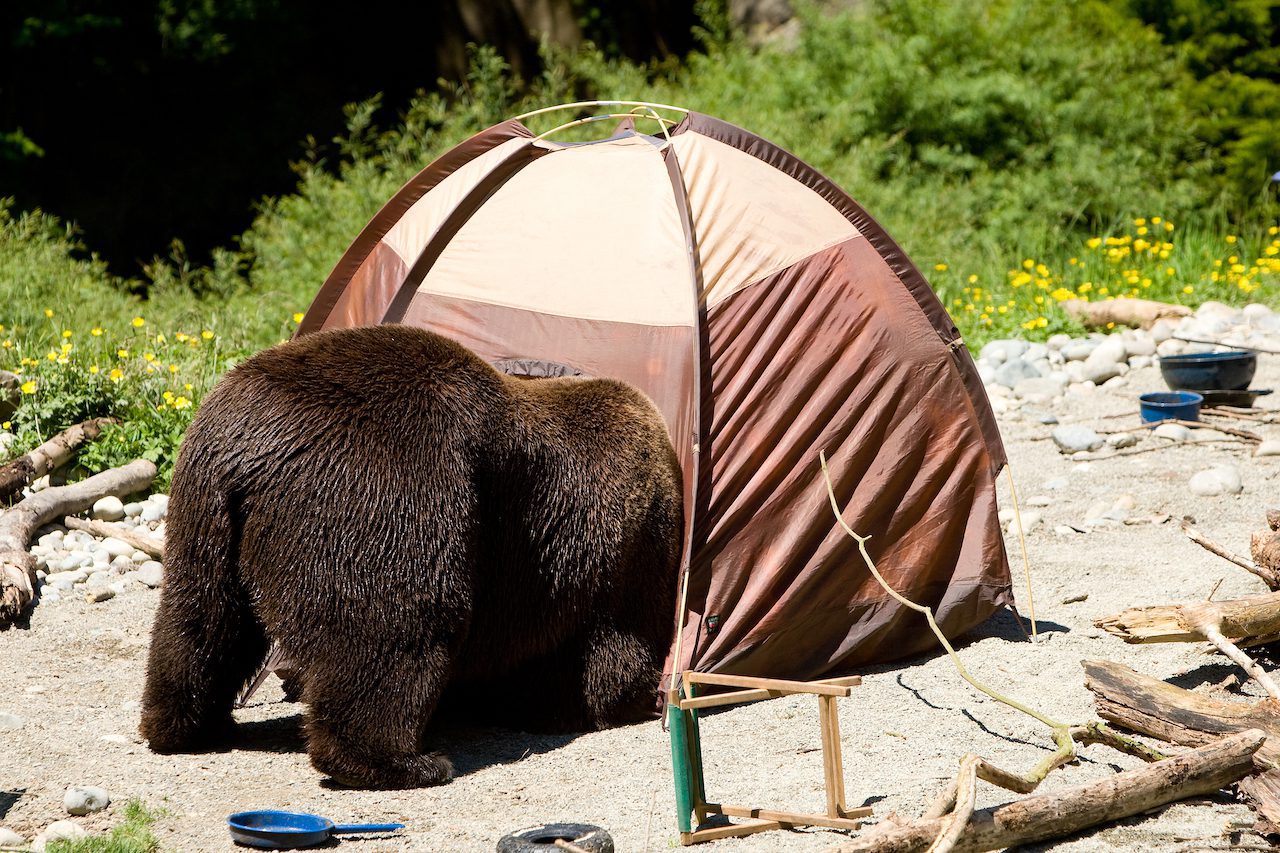
It is essential to properly store your food while backpacking to protect yourself and the surrounding wildlife. Many animals, especially bears, have an excellent sense of smell, and they will find a way to get to your food if it is not stored correctly. By not properly storing your food, you risk unwanted and potentially dangerous wildlife encounters.
Poor food storage techniques can not only be harmful to you, but they also pose a danger to wildlife if they get ahold of human food. If a bear starts eating human food, it may lose its preference for its natural diet and begin to seek out humans in search of food. Bears that do this typically no longer fear humans and become unpredictable and dangerous. Unfortunately, park rangers often put down these bears as they pose a public safety danger to park visitors.
The good news is if you properly store your food, you will be able to prevent unwanted animal encounters, which will protect your livelihood and the wildlife.
Know Food Storage Regulations Of The Park You Are Visiting:
The first thing you need to know is the rules and regulations of the park with regard to food storage. Food storage is not uniform across all parks and varies depending on the wildlife of the region you are in.
When researching a park’s food storage policies, you want to determine whether the park requires bear canisters, bear hangs, or if it provides it’s own bear box for nighttime food storage. Knowing the food storage regulations of the park you visit is the first step to efficiently and responsibly storing your food while backpacking.
Dump Food In Plastic Containers Into Ziploc Bags:
After buying all of your food, you may find some stored in rigid plastic containers. We will dump all food in these containers into zip lock bags. The reason is that plastic containers are more difficult to pack due to their awkward size and rigidness. Transferring your food from plastic containers to zip lock bags makes them easier to pack, thanks to their malleability.
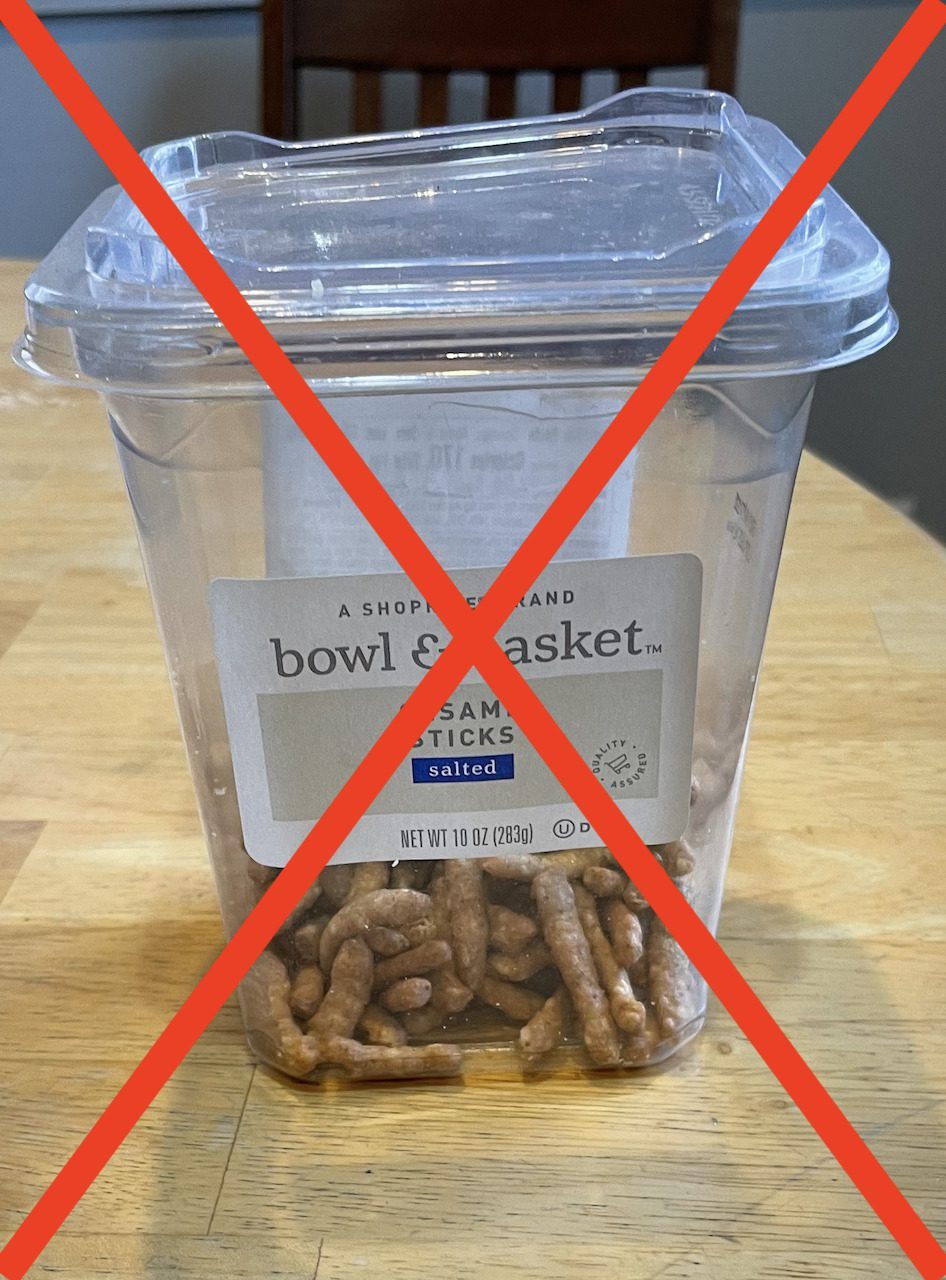
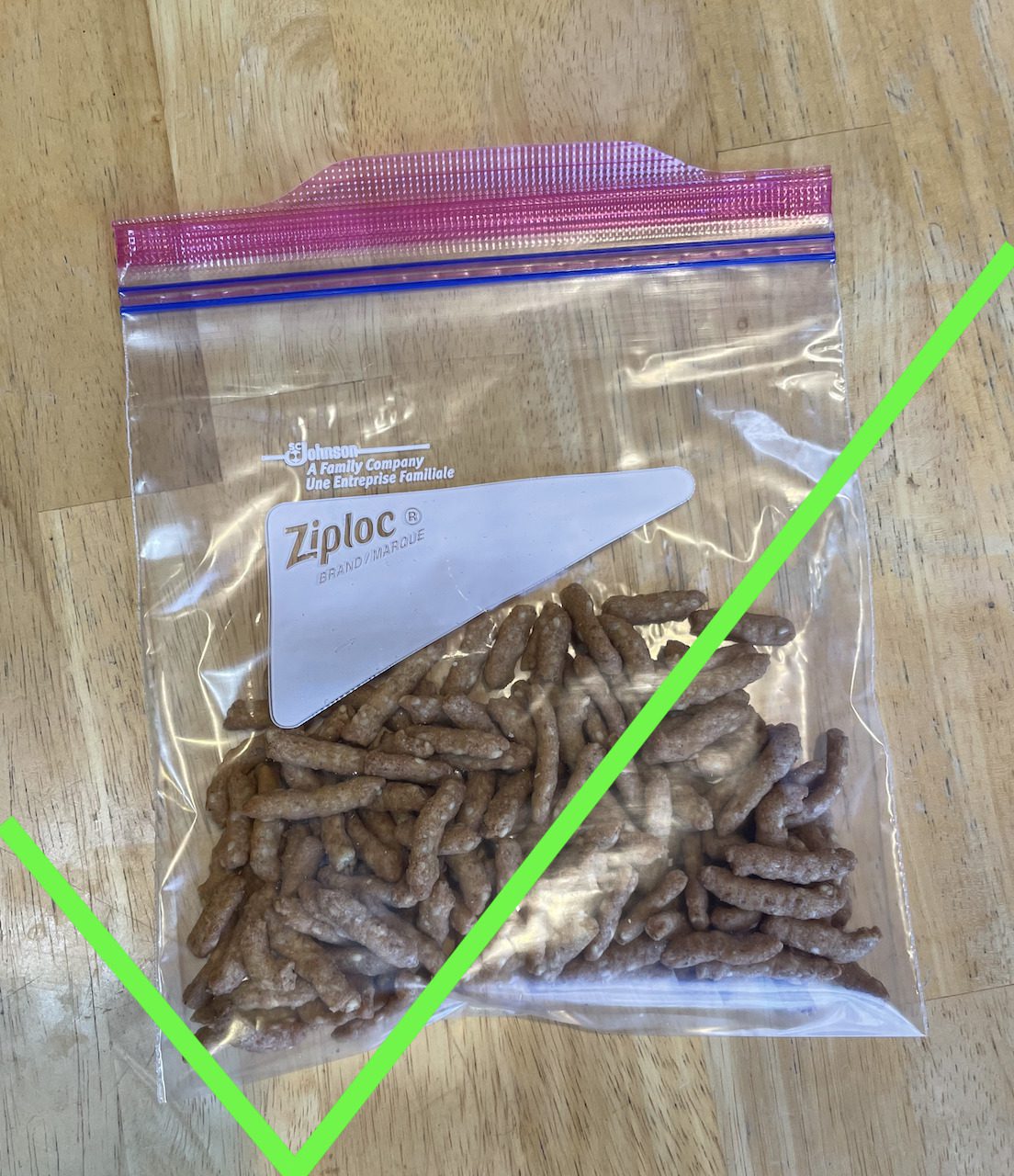
Divide Your Food Into Days:
After you get your food out of those pesky containers, you want to divide your meals into days you are spending in the backcountry. This means that you will set aside what you will be eating for breakfast, lunch, and dinner for each day you will be trekking. An example of this is listed below.
Day 1:
- Breakfast
- Instant Coffee
- Oatmeal
- Justins peanutbutter
- Lunch
- Protein bar
- Dried fruit
- Trail mix
- Dinner
- Freeze dried backpacking meal
- Granola bar
Day 2:
- Breakfast
- Instant Coffee
- Oatmeal
- Justins peanutbutter
- Lunch
- Protein bar
- Dried fruit
- Snickers
- Dinner
- Freeze dried backpacking meal
- chocolate
Day 3:
- Breakfast
- Instant Coffee
- Oatmeal
- Justins peanutbutter
- Lunch
- Protein bar
- Dried fruit
- Trail mix
- Dinner
- Freeze dried backpacking meal
- Granola bar
Layer Each Day Of Meals:
After setting up each day’s meals, you want to strategically layer them in either your bear canister or bear hang bag. Doing a good job organizing your food before setting out will save you a ton of time and trouble when in the backcountry. There is no feeling quite as frustrating as digging around to get to that one coffee packet floating in the abyss of your pack.
One detail to keep in mind is to put your later meals of the day toward the bottom of the container. So it should go:
bottom of container ->Dinner->Lunch->Breakfast-> Dinner->Lunch->Breakfast etc
Organizing your meals in chronological order makes it easier to eat your way through your cache as you go, rather than rummaging around to get to a specific meal.
Storing Food With A Bear Box:
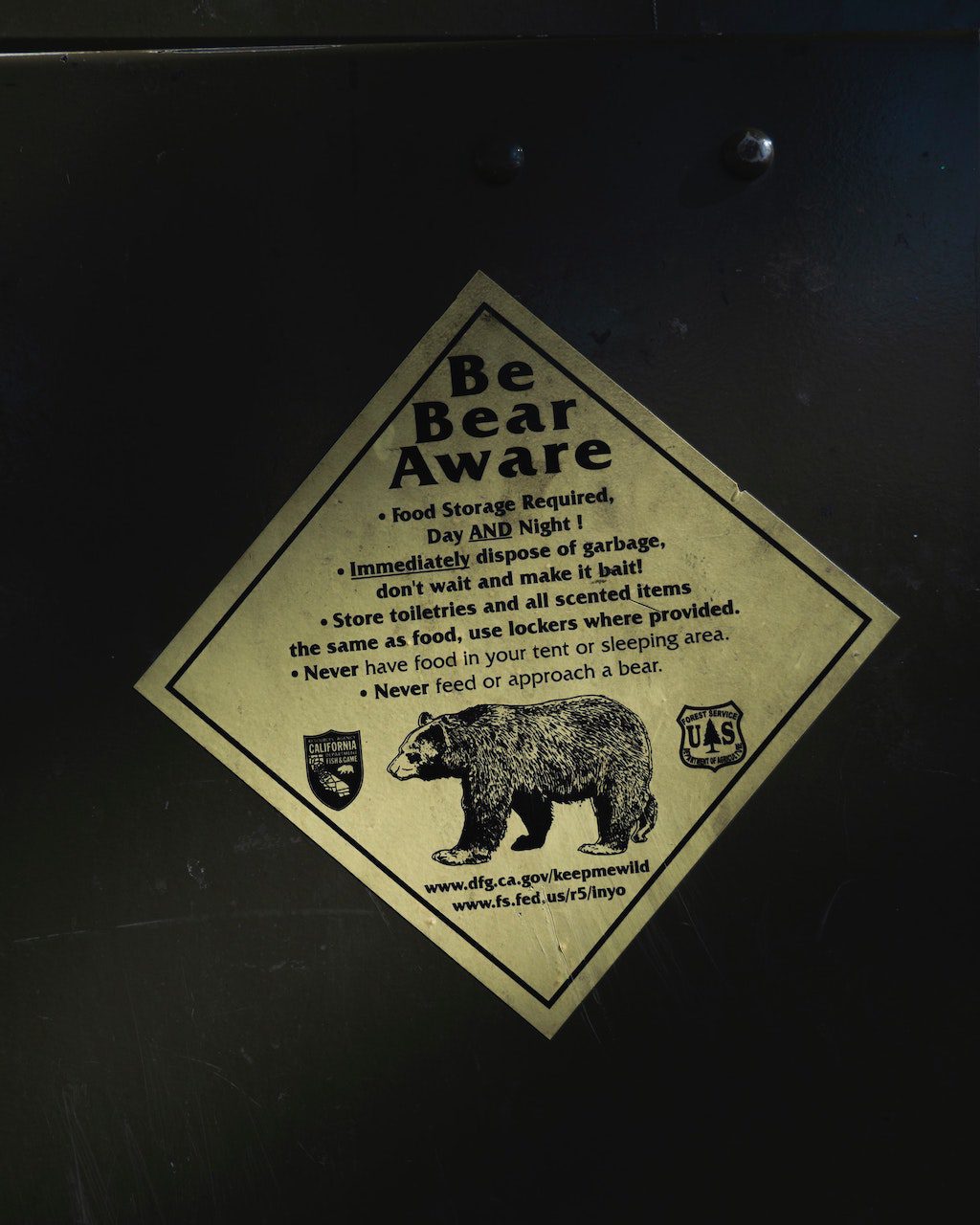
One of the most convenient ways of storing your food in the backcountry is if you have a bear box at your campground. Bear boxes are large metal storage containers provided by national parks for campground visitors to store food in.
When using Bear boxes you will put all food and odorus itens inside when going to sleep. be sure to fully lock the bear box prior to hitting the hay. These boxes are especially helpful when backpacking because they remove the need for using bear canisters and bear hangs.
How To Store Your Food With A Bear Canister?
Bear canisters are sealed containers used to store all food and odorous items when camping to keep your food from bears and other wildlife. Thanks to bear canisters locking mechanisms similar to a pill bottle, animals cannot easily access their contents.
What Items Need to Be Stored In A Bear Canister?
In short anything with an odorous scent should be stored in a bear canister.
Some of these items include:
- Food
- Trash
- Toothbrush/toothpaste
- Deodorant
- Wash Wipes
- Bug Spray
- Sunscreen
- Anything with an odor!
Where To Place Your Bear Canister?
- 100 yards downwind from camp.
- Away from any streams or water sources
- Off any sort of incline or cliff where it has the potential to roll away.
- Cover up your bear canister with local fauna or brush
- REMEMBER where you placed it
When looking for a location to place your bear canister, you need to go 100yds downwind from camp and find an area away from any water source or streams. You want to keep your canister away from a stream or water source because you don’t want to risk having the wind blowing your cache into a stream.
After finding your spot, cover it up with some local brush, and DO NOT forget where you put your bear canister.
Best Way To Pack Your Bear Canister:
While they are a practical means of storing your food, bear canisters can be bulky and difficult to pack. Due to their weight and rigidity, I recommend putting your bear canister at the bottom of your pack. This will help keep most of your pack weight on your hips and prevent you from becoming top-heavy while hiking.
How To Store Food Using A Bear Hang:
A bear hang is a food storage measure that requires using a pulley system to suspend a bag on a tree branch keeping your food and odorous items away from local wildlife.
How To Make A Bear Hang?
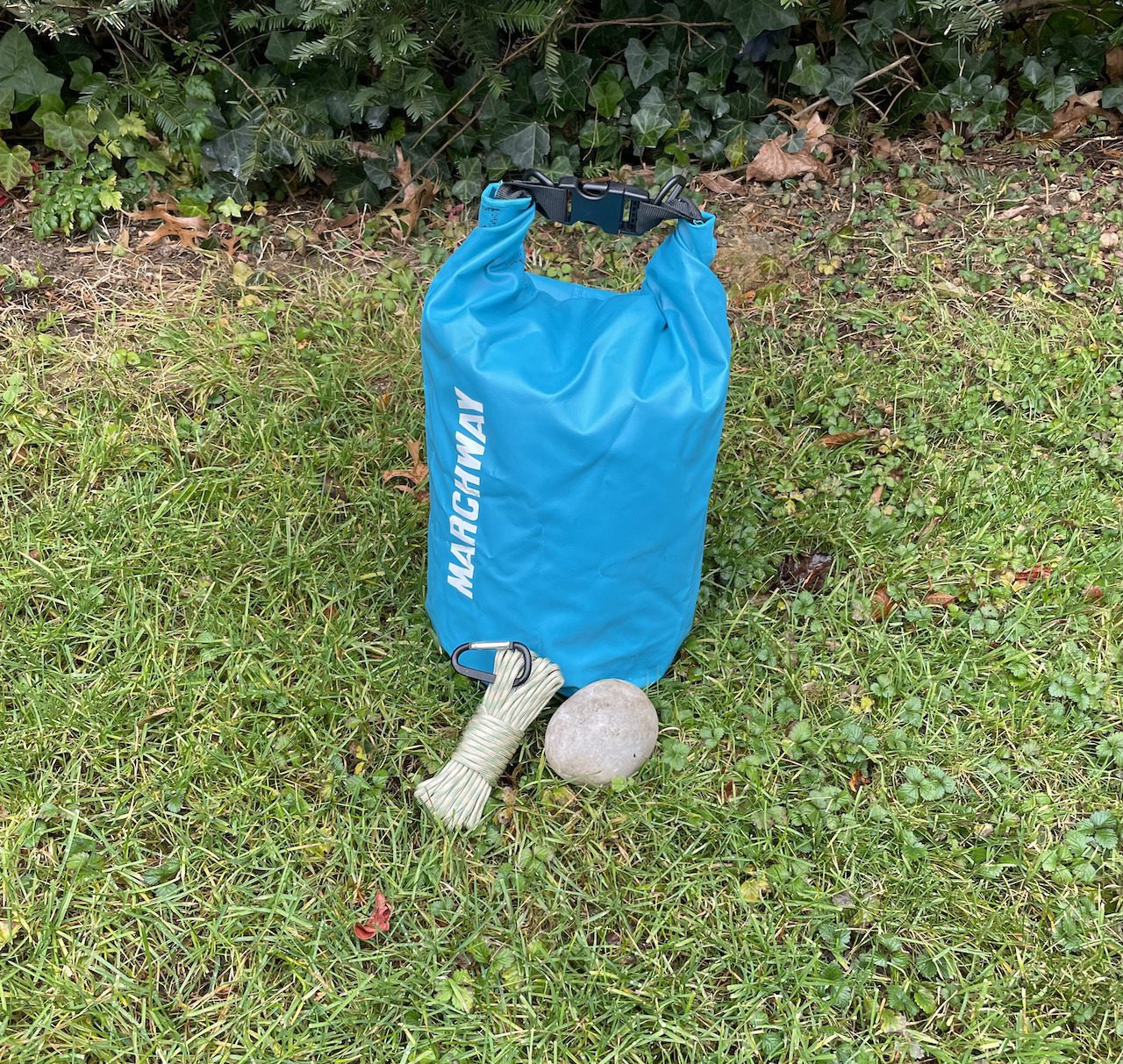
A bear hang is a simple food storage system that consists of a bag, some paracord, and a rock. While there are a few different options, you can go with, for your bear hang bag. I recommend using a dry bag, as it is water-resistant and will help protect your contents from the elements.
Step #1: Pack your food and odorous items in your dry bag.
Step #2 Find a tree at least 200ft from your campsite.
Step #3: Tie one end of your paracord to a rock that you can comfortably throw.
Step #4: Throw rock over a tree branch and tie the other end of the paracord to your dry bag.
Step #5: Pull the dry bag up.
Sept #6: Aim to have your bag 15 feet off the ground and 10 feet away from the tree trunk.
Step #7: Untie paracord from rock and secure it to a nearby tree.
Bear Hang The PCT Way:
A different method to bear hanging, the PCT Method is very similar to the traditional bear hanging method listed above without the need for securing paracord to a local tree. These type of bear hang is typically more bearproof than the original and even requires less paracord. Check out this video to bear hang the PCT way!
Packing Out Our Food Wrappers:

After using each food item, you need to make sure you dispose of their wrappers appropriately, adhering to leave no trace principles. You need to have somewhere to dispose of your wrappers while backpacking. Typically a gallon-sized ziplock bag does the trick. After each meal, you need to make sure you dispose of your wrappers your bag and store your trash bag wherever you are keeping your food,
Hope This Was Helpful!
I hope this guide was helpful for you. Like anything else, storing your food is a skill that can be honed by continuing to get in the backcountry and practicing. Feel free to leave a comment if you have any helpful tips to help you store your food while backpacking.


